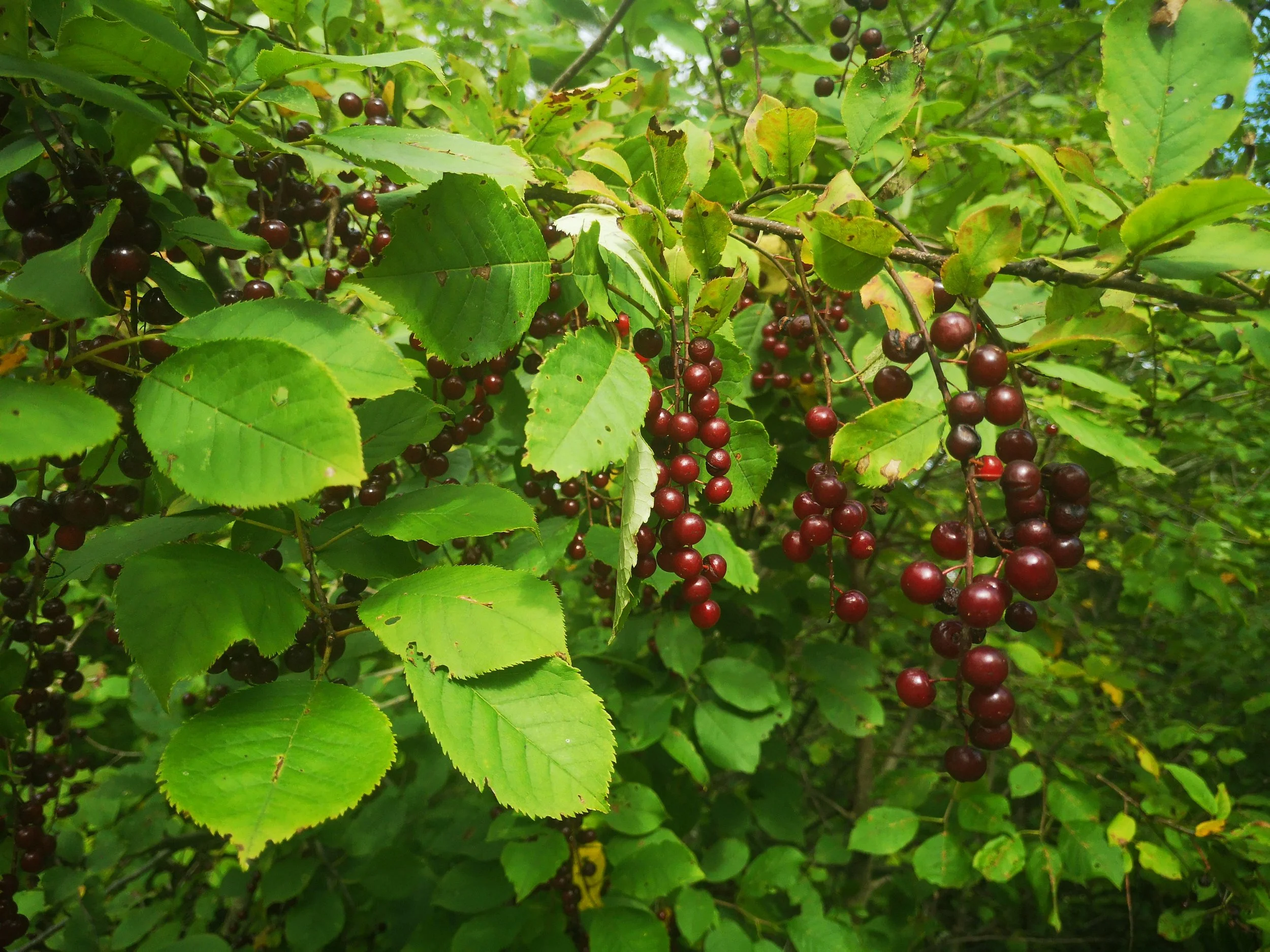Chokecherry: Uses and Benefits
(Prunus Virginiana)
Although chokecherries are native to and widely available in the wild across North America, they are no longer well known or commonly used. It is highly unlikely that you would find chokecherries in the store, but you may find ample supply if you learn to correctly identify the chokecherry plant in the wild and locate some chokecherry trees.
Chokecherries have a long history of use amongst the indigenous peoples of North America, both as food and medicine. Later on they were also adopted by the settlers of North America, but few are aware of or use chokecherries today.
Uses
Chokecherry Fruit As Food
Indigenous peoples of North America would use the fruit as a food source. Chokecherries were collected in the fall and dried, often with the pits of the cherries still inside. (1) They were also used to make Pemmican, a mixture of dried ground meat, tallow, and crushed chokecherries. This made for a nutrient dense and portable food source. Chokecherries can also be crushed and formed into patties and sun dried or dehydrated. (2) Chokecherries have also been used to make syrups, juices, wines and jellies.
Like regular cherries and stone fruits, the pits of chokecherries contain naturally occurring amygdalin, which gives them an almond smell when crushed. (1) Amygdalin converts to hydrocyanic acid in the body, which can be fatal in large doses. Amygdalin is used as a controversial cancer treatment. Laetrile, a semi-synthetic form of amygdalin that was used as a cancer treatment has been banned by the Food and Drugs Agency (FDA) in the USA and the European Commission citing risks of cyanide poisoning and lack of reliable evidence of curative effects. (5)
Cooking or drying the chokecherry pits will lessen the toxic effects of hydrocyanic acid. (3) To avoid the risk of hydrocyanic acid completely, only consume the flesh of the chokecherry fruit.
Tree Bark as a Tea
The inner bark of the chokecherry tree was traditionally made into tea and used to treat coughs, colds, sore throats, pneumonia and diarrhea. The tea was also used as a tonic for women who had just given birth to help restore their strength. (3) Like the pits, the bark of the chokecherry tree also contains hydrocyanic acid, so if used, it should be with the utmost caution. To eliminate risks associated with hydrocyanic acid, it should be avoided altogether.
Tree Bark as a Topical
The indigenous peoples of North America also used the inner bark of the chokecherry tree topically for skin wounds, as the cyanide sugars killed bacteria and acted as an antiseptic. (4)
Disclaimer:
The information on Better Health Project is intended for educative and informational purposes only and is not intended to serve as professional or medical advice. The content of this site is not written by a medical professional. Always seek the advice of a trusted and qualified healthcare professional before making health changes.
Sources
Choke cherry. (n.d.). https://www.for.gov.bc.ca/hfd/library/documents/treebook/chokecherry.htm
Drying Chokecherries. (2007, January 1). South Dakota State University: Open PRAIRIE. Retrieved August 24, 2023, from https://openprairie.sdstate.edu/cgi/viewcontent.cgi?article=1485&context=extension_extra#:~:text=Pemmican%20is%20ground%20dried%20meat,source%20of%20protein%20for%20energy.
MacKinnon, A. (2009). Edible and Medicinal Plants of Canada. Lone Pine Publishing.
Chokecherry - Native Memory Project. (2019, September 23). Native Memory Project. https://nativememoryproject.org/plant/chokecherry/#:~:text=The%20dried%20inner%20bark%20was,and%20its%20health-giving%20attributes.
Milazzo, S., Horneber, M., & Ernst, E. (2015). Laetrile treatment for cancer. The Cochrane Library, 2018(7). https://doi.org/10.1002/14651858.cd005476.pub4
